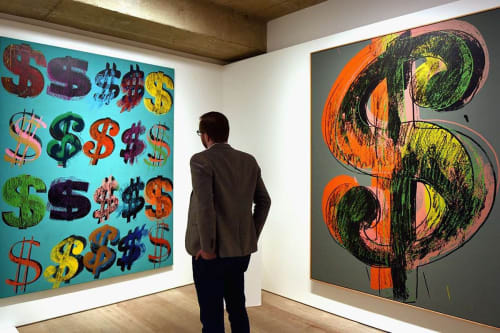If you love art, why not invest in it?
By Muys Snijders
Over the last few weeks, we have closely followed the November 20th / 21st Century Art Auctions in New York, an unusually long affair, totaling $2.3bn making headlines across the world. Despite there being a strong appetite from buyers, sellers remained hesitant last year. This season all that changed, now that we are at the tail end of the Covid-19 pandemic, collectors are more willing to bring their works to market and demand remains high, especially from Asia. Two outstanding single-owner collections were brought to the auction block this fall: The Cox Collection at Christie's and the Macklowe Collection at Sotheby's and we saw competition for museum caliber works of art by the likes of Picasso, Caillebotte, Rothko, Giacometti, Cezanne, Van Gogh, Jackson Pollock, and Monet.
Why is art a good investment?
Art is often heralded for achieving a higher return on the stock market than traditional assets (Wall Street Journal: art achieved 10.6% in 2018 based on Art Market Research Art Index). Outstanding estate and collection sales like Cox and Macklowe only further showcase the ability of art to appreciate in value. It is important to note though that collections like these generally have been acquired over the timespan of half a century and reflect the collector's eye, quality and passion for the works. Those looking to invest in art, often do so in order to maximize their return on investment. Of course there is a level of risk involved similar to other investments. What makes art attractive as an asset class is that the art market is not highly correlated with the stock or bond market and as such it makes a good alternative asset class in a diversified portfolio. In addition, art is less volatile and can function as a hedge against inflation provided you are able to treat it as a medium to long term investment. Moreover, collecting art may offer tax advantages. The long term profits tend to get taxed at lower rates and donations to institutions may add further tax advantages.
How do I know what to buy?
Investors can start buying works by contemporary artists. This can be tricky as buyers either have to bet on unknown artists, or pay dearly for more established (blue chip) names. A popular method has been to look at groups of underappreciated or underrepresented artists or mediums i.e. artists that have been overlooked by art history, like female artists or artists from the African Diaspora or to invest in a new medium of art like NFTs (Non-Fungible Tokens). Acquiring works at auction is often the easiest and most cost efficient way to acquire works. Alternatively, building a good relationship and acquiring works from a gallery whose artists are in consistent demand could work too.
What to look out for when buying art as an investment?
Investors in art often forget that an artwork requires, just like any other asset, upkeep and the costs of doing so can greatly vary depending on the value, type, condition, location and other factors. In addition, if you are purchasing art solely for investment purposes it is important to get some insights into its annualized rate of return. Calculating a Rate of Return on investments in art can be a challenge. It is important to identify the most appropriate performance index for the art in question, and ideally utilize a market liquidity evaluation tool and work with a qualified appraiser to regularly (re)assess the value of the works. As always, if you are looking to buy high end works of art, always use an art advisor, with decent trade and auction house experience, to make sure you don't fall into one of the many buying traps.
When is the ideal time to sell?
The market for contemporary art sees regular fluctuations which can create sales opportunities either through auction or private sale. Monitoring the market by following auction results and prices realized for the artists you collect or those artists that are similar to the ones in your portfolio is a good way to keep abreast of market movements. In the event the artist does not have a secondary market yet, following the artist's career progression, their presence in museum collections, coverage by the art press and inclusion in museum exhibitions are all indicators of the artists success trajectory. Most investors sell either because their appreciation exceeds their cost base, or because they are forced to sell.
Enjoy it !
Ultimately, and most importantly, we always recommend buying art that you enjoy. If everything else fails you have been in the fortunate position to be the custodian of the work for the duration of its lifetime. Follow your passion and your instinct and have fun with it. If you love art, why not invest in it?
Muys Snijders is the founder of MUYS.ART and Art Business Consulting - our team can help you with questions about how and what to buy in a very opaque market as well as how to navigate all aspects related to collections care. Call us on 929 344 2201 or email info@muys.art
December 17, 2021

